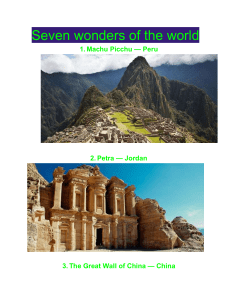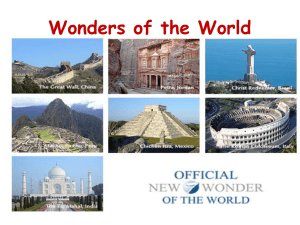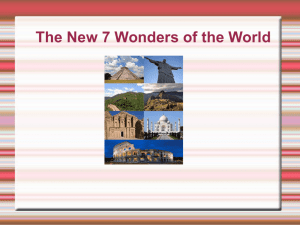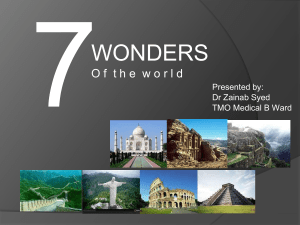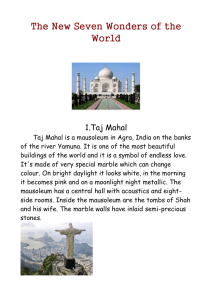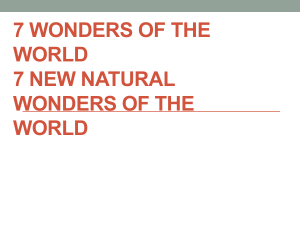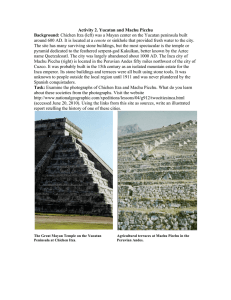New 7 Wonders Foundation`s seven wonders of the world A.Misyuk
advertisement
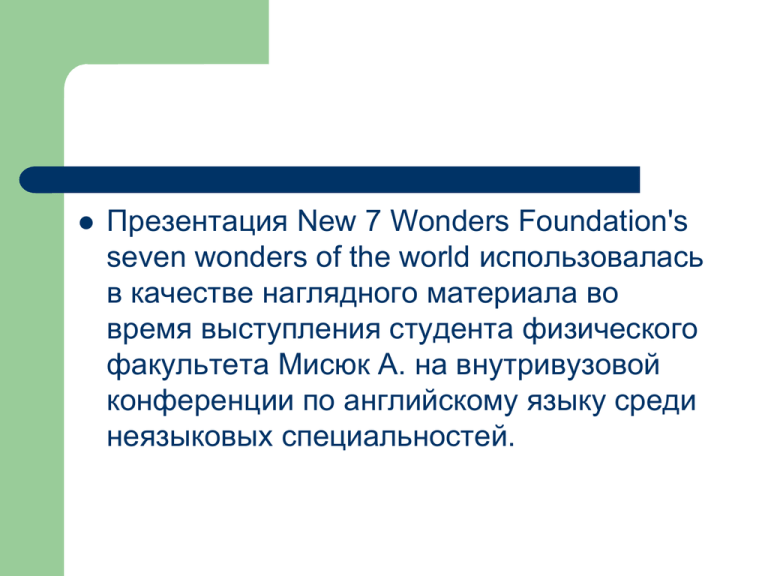
Презентация New 7 Wonders Foundation's seven wonders of the world использовалась в качестве наглядного материала во время выступления студента физического факультета Мисюк А. на внутривузовой конференции по английскому языку среди неязыковых специальностей. New 7 Wonders Foundation's seven wonders of the world A.Misyuk Supervision: T.Lozovskaya Taj Mahal The Taj Mahal is considered the finest example of Mughal architecture, a style that combines elements from Persian, Ottoman, Indian, and Islamic architectural styles. In 1983, the Taj Mahal became a UNESCO World Heritage Site. Taj Mahal Artistic depiction of Mumtaz Mahal Machu Picchu Machu Picchu was built in the classical Inca style, with polished dry-stone walls. Its primary buildings are the Intihuatana, the Temple of the Sun, and the Room of the Three Windows. These are located in what is known by archaeologists as the Sacred District of Machu Picchu. . Great Wall of China Before the use of bricks, the Great Wall was mainly built from Earth or Taipa, stones, and wood. Battlements line the uppermost portion of the vast majority of the wall, with defensive gaps a little over 30 cm tall, and about 23 cm wide. Colosseum Although in the 21st century it stays partially ruined due to damage caused by devastating earthquakes and stone-robbers, the Colosseum is an iconic symbol of Imperial Rome and its breakthrough achievements in earthquake engineering. It is one of Rome's most popular tourist attractions. Christ the Redeemer (statue) Local engineer Heitor da Silva Costa designed the statue; it was sculpted by French sculptor Paul Landowski. The statue was struck by lightning during a violent electrical storm on Sunday, February 10, 2008. The storm caused havoc in Rio, falling trees in several neighborhoods, but the statue was left unscathed. Chichen Itza The Maya name "Chich'en Itza" means "At the mouth of the well of the Itza." Itzá is the name of an ethnic-lineage group that gained political and economic dominance of the northern peninsula. Petra Although Petra is usually identified with Sela which also means a rock, the Biblical references refer to it as "the cleft in the rock", referring to its entrance

